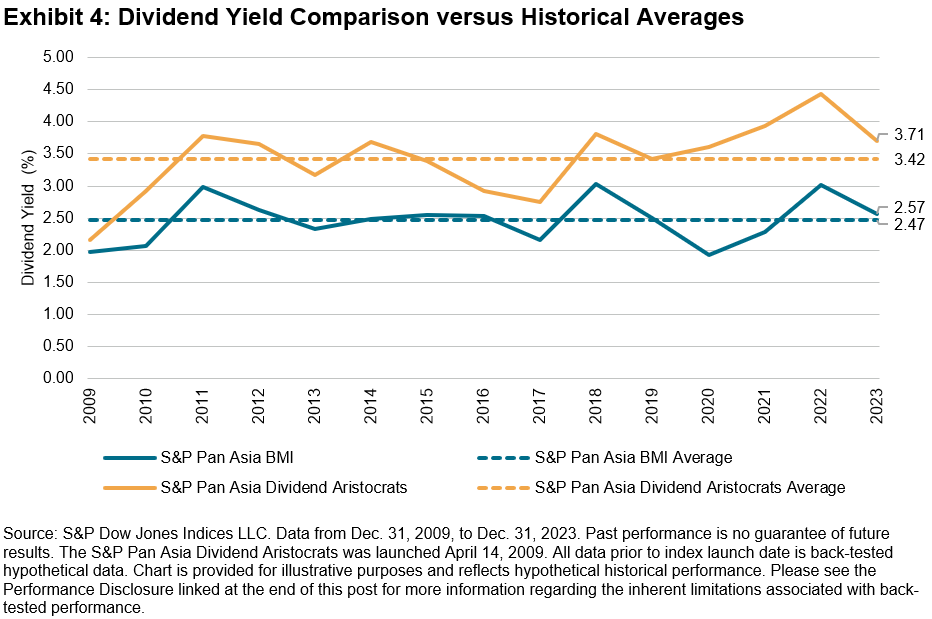{“page”:0,” year”:2024,” monthnum”:2,” day”:8,” name”:” the-sp-500-esg-index-turns-5″,” mistake”:””,” m”:””,” p”:0,” post_parent”:””,” subpost”:””,” subpost_id”:””,” accessory”:””,” attachment_id”:0,” pagename”:””,” page_id”:0,” 2nd”:””,” minute”:””,” hour”:””,” w”:0,” category_name”:””,” tag”:””,” feline”:””,” tag_id”:””,” author”:””,” author_name”:””,” feed”:””,” tb”:””,” paged”:0,” meta_key”:””,” meta_value”:””,” sneak peek”:””,” s”:””,” sentence”:””,” title”:””,” fields”:””,” menu_order”:””,” embed”:””,” classification __ in”: [],” classification __ not_in”: [],” classification __ and”: [],” post __ in”: [],” post __ not_in”: [],” post_name __ in”: [],” tag __ in”: [],” tag __ not_in”: [],” tag __ and”: [],” tag_slug __ in”: [],” tag_slug __ and”: [],” post_parent __ in”: [],” post_parent __ not_in”: [],” author __ in”: [],” author __ not_in”: [],” search_columns”: [],” ignore_sticky_posts”: incorrect,” suppress_filters”: incorrect,” cache_results”: real,” update_post_term_cache”: real,” update_menu_item_cache”: incorrect,” lazy_load_term_meta”: real,” update_post_meta_cache”: real,” post_type”:””,” posts_per_page”:” 5″,” nopaging”: incorrect,” comments_per_page”:” 50″,” no_found_rows”: incorrect,” order”:” DESC”}
[{“display”:”Craig Lazzara”,”title”:”Managing Director, Index Investment Strategy”,”image”:”/wp-content/authors/craig_lazzara-353.jpg”,”url”:”https://www.indexologyblog.com/author/craig_lazzara/”},{“display”:”Tim Edwards”,”title”:”Managing Director, Index Investment Strategy”,”image”:”/wp-content/authors/timothy_edwards-368.jpg”,”url”:”https://www.indexologyblog.com/author/timothy_edwards/”},{“display”:”Hamish Preston”,”title”:”Head of U.S. Equities”,”image”:”/wp-content/authors/hamish_preston-512.jpg”,”url”:”https://www.indexologyblog.com/author/hamish_preston/”},{“display”:”Anu Ganti”,”title”:”Senior Director, Index Investment Strategy”,”image”:”/wp-content/authors/anu_ganti-505.jpg”,”url”:”https://www.indexologyblog.com/author/anu_ganti/”},{“display”:”Fiona Boal”,”title”:”Managing Director, Global Head of Equities”,”image”:”/wp-content/authors/fiona_boal-317.jpg”,”url”:”https://www.indexologyblog.com/author/fiona_boal/”},{“display”:”Phillip Brzenk”,”title”:”Managing Director, Global Head of Multi-Asset Indices”,”image”:”/wp-content/authors/phillip_brzenk-325.jpg”,”url”:”https://www.indexologyblog.com/author/phillip_brzenk/”},{“display”:”Wenli Bill Hao”,”title”:”Director, Factors and Dividends Indices, Product Management and Development”,”image”:”/wp-content/authors/bill_hao-351.jpg”,”url”:”https://www.indexologyblog.com/author/bill_hao/”},{“display”:”Howard Silverblatt”,”title”:”Senior Index Analyst, Product Management”,”image”:”/wp-content/authors/howard_silverblatt-197.jpg”,”url”:”https://www.indexologyblog.com/author/howard_silverblatt/”},{“display”:”John Welling”,”title”:”Director, Global Equity Indices”,”image”:”/wp-content/authors/john_welling-246.jpg”,”url”:”https://www.indexologyblog.com/author/john_welling/”},{“display”:”Michael Orzano”,”title”:”Senior Director, Global Equity Indices”,”image”:”/wp-content/authors/Mike.Orzano-231.jpg”,”url”:”https://www.indexologyblog.com/author/mike-orzano/”},{“display”:”Maria Sanchez”,”title”:”Director, Sustainability Index Product Management, U.S. Equity Indices”,”image”:”/wp-content/authors/maria_sanchez-527.jpg”,”url”:”https://www.indexologyblog.com/author/maria_sanchez/”},{“display”:”Shaun Wurzbach”,”title”:”Managing Director, Head of Commercial Group (North America)”,”image”:”/wp-content/authors/shaun_wurzbach-200.jpg”,”url”:”https://www.indexologyblog.com/author/shaun_wurzbach/”},{“display”:”Silvia Kitchener”,”title”:”Director, Global Equity Indices, Latin America”,”image”:”/wp-content/authors/silvia_kitchener-522.jpg”,”url”:”https://www.indexologyblog.com/author/silvia_kitchener/”},{“display”:”Akash Jain”,”title”:”Director, Global Research & Design”,”image”:”/wp-content/authors/akash_jain-348.jpg”,”url”:”https://www.indexologyblog.com/author/akash_jain/”},{“display”:”Ved Malla”,”title”:”Associate Director, Client Coverage”,”image”:”/wp-content/authors/ved_malla-347.jpg”,”url”:”https://www.indexologyblog.com/author/ved_malla/”},{“display”:”Rupert Watts”,”title”:”Head of Factors and Dividends”,”image”:”/wp-content/authors/rupert_watts-366.jpg”,”url”:”https://www.indexologyblog.com/author/rupert_watts/”},{“display”:”Jason Giordano”,”title”:”Director, Fixed Income, Product Management”,”image”:”/wp-content/authors/jason_giordano-378.jpg”,”url”:”https://www.indexologyblog.com/author/jason_giordano/”},{“display”:”Brian Luke”,”title”:”Senior Director, Head of Commodities, Real & Digital Assets”,”image”:”/wp-content/authors/brian.luke-509.jpg”,”url”:”https://www.indexologyblog.com/author/brian-luke/”},{“display”:”Qing Li”,”title”:”Director, Global Research & Design”,”image”:”/wp-content/authors/qing_li-190.jpg”,”url”:”https://www.indexologyblog.com/author/qing_li/”},{“display”:”Sherifa Issifu”,”title”:”Senior Analyst, U.S. Equity Indices”,”image”:”/wp-content/authors/sherifa_issifu-518.jpg”,”url”:”https://www.indexologyblog.com/author/sherifa_issifu/”},{“display”:”George Valantasis”,”title”:”Associate Director, Factors and Dividends”,”image”:”/wp-content/authors/george-valantasis-453.jpg”,”url”:”https://www.indexologyblog.com/author/george-valantasis/”},{“display”:”Glenn Doody”,”title”:”Vice President, Product Management, Technology Innovation and Specialty Products”,”image”:”/wp-content/authors/glenn_doody-517.jpg”,”url”:”https://www.indexologyblog.com/author/glenn_doody/”},{“display”:”Priscilla Luk”,”title”:”Managing Director, Global Research & Design, APAC”,”image”:”/wp-content/authors/priscilla_luk-228.jpg”,”url”:”https://www.indexologyblog.com/author/priscilla_luk/”},{“display”:”Liyu Zeng”,”title”:”Director, Global Research & Design”,”image”:”/wp-content/authors/liyu_zeng-252.png”,”url”:”https://www.indexologyblog.com/author/liyu_zeng/”},{“display”:”Sean Freer”,”title”:”Director, Global Equity Indices”,”image”:”/wp-content/authors/sean_freer-490.jpg”,”url”:”https://www.indexologyblog.com/author/sean_freer/”},{“display”:”Barbara Velado”,”title”:”Senior Analyst, Research & Design, Sustainability Indices”,”image”:”/wp-content/authors/barbara_velado-413.jpg”,”url”:”https://www.indexologyblog.com/author/barbara_velado/”},{“display”:”Benedek Vu00f6ru00f6s”,”title”:”Director, Index Investment Strategy”,”image”:”/wp-content/authors/benedek_voros-440.jpg”,”url”:”https://www.indexologyblog.com/author/benedek_voros/”},{“display”:”Cristopher Anguiano”,”title”:”Senior Analyst, U.S. Equity Indices”,”image”:”/wp-content/authors/cristopher_anguiano-506.jpg”,”url”:”https://www.indexologyblog.com/author/cristopher_anguiano/”},{“display”:”Jason Ye”,”title”:”Director, Factors and Thematics Indices”,”image”:”/wp-content/authors/Jason%20Ye-448.jpg”,”url”:”https://www.indexologyblog.com/author/jason-ye/”},{“display”:”Michael Mell”,”title”:”Global Head of Custom Indices”,”image”:”/wp-content/authors/michael_mell-362.jpg”,”url”:”https://www.indexologyblog.com/author/michael_mell/”},{“display”:”Maya Beyhan”,”title”:”Senior Director, ESG Specialist, Index Investment Strategy”,”image”:”/wp-content/authors/maya.beyhan-480.jpg”,”url”:”https://www.indexologyblog.com/author/maya-beyhan/”},{“display”:”Andrew Innes”,”title”:”Head of Global Research & Design”,”image”:”/wp-content/authors/andrew_innes-189.jpg”,”url”:”https://www.indexologyblog.com/author/andrew_innes/”},{“display”:”Joseph Nelesen”,”title”:”Senior Director, Index Investment Strategy”,”image”:”/wp-content/authors/joseph_nelesen-452.jpg”,”url”:”https://www.indexologyblog.com/author/joseph_nelesen/”},{“display”:”Fei Wang”,”title”:”Senior Analyst, U.S. Equity Indices”,”image”:”/wp-content/authors/fei_wang-443.jpg”,”url”:”https://www.indexologyblog.com/author/fei_wang/”},{“display”:”Izzy Wang”,”title”:”Senior Analyst, Factors and Dividends”,”image”:”/wp-content/authors/izzy.wang-326.jpg”,”url”:”https://www.indexologyblog.com/author/izzy-wang/”},{“display”:”Rachel Du”,”title”:”Senior Analyst, Global Research & Design”,”image”:”/wp-content/authors/rachel_du-365.jpg”,”url”:”https://www.indexologyblog.com/author/rachel_du/”},{“display”:”Jaspreet Duhra”,”title”:”Managing Director, Global Head of Sustainability Indices”,”image”:”/wp-content/authors/jaspreet_duhra-504.jpg”,”url”:”https://www.indexologyblog.com/author/jaspreet_duhra/”},{“display”:”Srineel Jalagani”,”title”:”Senior Director, Thematic Indices”,”image”:”/wp-content/authors/srineel_jalagani-446.jpg”,”url”:”https://www.indexologyblog.com/author/srineel_jalagani/”},{“display”:”Eduardo Olazabal”,”title”:”Senior Analyst, Global Equity Indices”,”image”:”/wp-content/authors/eduardo_olazabal-451.jpg”,”url”:”https://www.indexologyblog.com/author/eduardo_olazabal/”},{“display”:”Ari Rajendra”,”title”:”Senior Director, Head of Thematic Indices”,”image”:”/wp-content/authors/Ari.Rajendra-524.jpg”,”url”:”https://www.indexologyblog.com/author/ari-rajendra/”},{“display”:”Daniel Perrone”,”title”:”Former Director and Head of Operations, ESG Indices”,”image”:”/wp-content/authors/daniel_perrone-387.jpg”,”url”:”https://www.indexologyblog.com/author/daniel_perrone/”},{“display”:”Louis Bellucci”,”title”:”Senior Director, Index Governance”,”image”:”/wp-content/authors/louis_bellucci-377.jpg”,”url”:”https://www.indexologyblog.com/author/louis_bellucci/”},{“display”:”Elizabeth Bebb”,”title”:”Director, Factor & Dividend Indices”,”image”:”/wp-content/authors/elizabeth_bebb-511.jpg”,”url”:”https://www.indexologyblog.com/author/elizabeth_bebb/”},{“display”:”Margaret Dorn”,”title”:”Senior Director, Head of ESG Indices, North America”,”image”:”/wp-content/authors/margaret.dorn-390.jpg”,”url”:”https://www.indexologyblog.com/author/margaret-dorn/”},{“display”:”Raghu Ramachandran”,”title”:”Head of Insurance Asset Channel”,”image”:”/wp-content/authors/raghu_ramachandram-288.jpg”,”url”:”https://www.indexologyblog.com/author/raghu_ramachandram/”}]
The S&P 500 ESG Index Turns 5!

Margaret Dorn
Senior Director, Head of ESG Indices, The United States And Canada
S&P Dow Jones Indices
The S&P 500 ®(* )ESG Index commemorated its 5th birthday on Jan. 28, 2024. Over the previous 5 years, the index has actually ended up being an essential piece of the sustainable indexing puzzle for financiers seeking to utilize the strength of the S&P 500 while including significant and quantifiable sustainability-focused improvements. Typically, five-year events are marked by gifting something made from wood. As a sign, wood represents strength, stability and the capability to stand up to obstacles. It embodies the vigor required to get rid of challenges and adjust to altering scenarios. In lots of methods, this is proper importance for an index that has actually been created to assist financiers resolve the obstacles and altering scenarios in a developing world.
Let’s commemorate this turning point with a glimpse back at the previous 5 years of the S&P 500 ESG Index.
From the Start
The launch of the S&P 500 ESG Index on Jan. 28, 2019, signified an advancement in sustainable investing. The index filled an essential space for financiers looking for to integrate ESG worths while keeping comparable general attributes to the commonly understood and used
S&P 500 ( see Exhibition 1). Developing Sustainability Landscape

Adjusting to the ever-changing landscape of sustainable indexing has actually been important over the life-span of the S&P 500 ESG Index. Numerous improvements have actually been made to the index approach to show the progressing beliefs of a sustainability-minded financier. These views have actually been voiced in the outcomes of numerous market assessments that resulted in a modified and broadened list of exemptions based upon a business’s participation in specific company activities (see Exhibition 2). The assessments likewise resolved numerous other appropriate updates, consisting of more regular eligibility look for company participation activities
3 and UNGC exemptions. 4 Most just recently, S&P Dow Jones Indices spoken with the marketplace on 2 essential sustainability improvements, which resulted in the modification from the Sustainalytics Item Participation to the S&P Global Service Participation Screens and the modification from the S&P DJI ESG Ratings to the S&P Global ESG Ratings. 5 With these improvements, the S&P 500 ESG Index has actually maintained its primary goal, which is to preserve comparable general market group weights to the S&P 500, while boosting the general sustainability profile of the index with a typical ESG Rating enhancement of 7.65% over its five-year life-span.

7 Five-Year Efficiency
As seen in Exhibition 3, the S&P 500 ESG Index has actually surpassed the S&P 500 not just over its 5 years of live history, however over the shorter-term 1 year and three-year durations too. One may presume that this outperformance has actually come at the cost of an increased threat profile for the index, however as we can see in Exhibition 4 that is not the case. The risk/performance profile of the S&P 500 ESG index was considerably much better than the S&P 500 over both the 3- and five-year timeframes.
Efficiency Viewpoint


Among the primary criticisms around sustainability financial investment methods is that the over (or under) efficiency is just an outcome of over (or under) weights to specific sectors. In Exhibition 5, it is clear that it is not real for the S&P 500 ESG Index, which has actually kept comparable sector direct exposure to the S&P 500 given that its launch. This is additional evidenced by taking a look at the efficiency attribution of the S&P 500 ESG Index. Exhibition 6 highlights that the excess returns have actually been mostly driven by stock choice instead of distinctions in sector direct exposure. This is by style, as the approach provides itself to a broadly sector-neutral result. Therefore, the outperformance was not all always due to substantial too much exposure to Infotech and underexposure to Energy, as some may presume.
Conclusion


The 5 years of live history for the S&P 500 ESG Index is certainly something to commemorate, and we eagerly anticipate seeing our sustainable indexing star continue to shine.
1
Illustration shows the present usage of the S&P DJI ESG Ratings in the index approach. On Jan. 23, 2024, S&P Dow Jones Indices revealed the outcomes of an assessment which revealed the transitioning of the S&P DJI ESG Ratings to the S&P Global ESG Ratings. The modifications will be carried out since the marketplace open on May 1, 2024. To learn more on the S&P Global ESG Ratings, please describe the S&P Global ESG Ratings Approach 2
In cases where dangers exist, S&P Global launches a Media and Stakeholder Analysis (MSA) that includes a series of problems such as financial criminal offense and corruption, scams, prohibited business practices, human rights problems, labor conflicts, work environment security, devastating mishaps and ecological catastrophes. The Index Committee examines constituents flagged by S&P Global’s MSA to assess the prospective effect of questionable business activities on the structure of the indices. If the Index Committee chooses to eliminate a business, that business is disqualified for re-entry for a minimum of one complete fiscal year, starting with the subsequent rebalancing. 3
Index constituents are examined on a quarterly basis for continuous eligibility under business Activities exemption requirements. Business figured out to be disqualified are gotten rid of from the index, reliable after the close of the last company day of July, October and January. The referral date for this evaluation is the last company day of the previous month. No constituent will be contributed to the index as an outcome of any removal that might occur. Modifications to Sustainalytics protection are ruled out as part of this evaluation. 4
As an outcome of market assessment that was completed Jan. 23, 2024, S&P DJI is modifying the Quarterly Eligibility Evaluation procedure in appropriate indices, so UNGC eligibility is constantly examined in March, June, September and December, in line with the schedule of the International Standards Evaluating dataset. This will make sure a prompt elimination of those business categorized as Non-Compliant with UNGC eligibility requirements no matter the rebalancing schedule of the particular index. To learn more on the outcomes of this assessment, please see UNGC Quarterly Eligibility Evaluation Approach Updates 5
Both improvements will be carried out to line up with the yearly rebalance of the S&P 500 ESG index which works after the close of the last company day of April. To learn more, please referral Transitioning S&P Sustainability Indices to S&P Global ESG Ratings and Service Participation Screens (spglobal.com) 6
To learn more on the marketplace assessments that led to these modifications, please see Historic Statements– Customer Resource Center|S&P Dow Jones Indices (spglobal.com) 7
The index has actually attained a typical S&P DJI ESG Rating enhancement of 7.65% (at the index level) from Jan. 27, 2020-Jan. 29, 2024, representing approximately 21.47% of the general ESG enhancement capacity, provided the sustainability attributes of the beginning universe.
The posts on this blog site are viewpoints, not suggestions. Please read our
Disclaimers Bond Starts and Beyond
Anu Ganti

Senior Director, Index Financial Investment Technique
S&P Dow Jones Indices
American political specialist James Carville when commented that he wishes to be reanimated as the bond market because, “
you can frighten everybody” Since July 2023, the worldwide bond market makes up about USD 135 trillion of securities, of which ranked business financial obligation represents USD 23 trillion 1 U.S. business financial obligation comprises approximately half of the worldwide overall, and as Exhibition 1 highlights, the 1980s were a turning point in the U.S., as business significantly changed far from looking for bank loans for funding requirements and towards leveraging the growing financial obligation capital markets. The structure of bond

holders has actually likewise developed. Many seemingly, direct retail ownership of corporates and U.S. Treasuries has actually near cut in half, from 20% of exceptional issuance in 2010 to 11% since Q2 2023. On the other hand, possessions in U.S. bond shared funds have actually nearly doubled. This has actually become part of a wider pattern of “professionalization” or disintermediation, which saw families gravitate far from direct security ownership and towards shared funds throughout the booming market of the 1990s In contrast to the equity markets, where index-based funds have

concerned represent nearly half of invested capital, about three-quarters of mutual fund possessions were still actively handled at year-end 2023, as we observe in Exhibition 3. This is partially due to the fact that set earnings index funds have a much shorter history than their equity cousins: a bond index fund didn’t exist up until 1986, and the very first bond ETF wasn’t introduced up until 2002— both lagging their equity equivalents by a years approximately. Nevertheless, passive investing in the bond markets might capture up. Simply as in equities, it appears
challenging for active supervisors to outshine over the long term On the other hand, given that 2010, the percentage of worldwide shared fund and ETF possessions that are passively handled has actually in reality grown quicker in bonds than in equities. If the transformative trajectory of passive investing in equity markets is any guide for set earnings, the phase might now be set for an impressive future for passive set earnings management. To evaluate whether (and why) bond markets may continue to capture up, we welcome you to dive into our thorough analysis

Describes the quantity of worldwide and U.S. business financial obligation ranked by S&P Global Rankings since July 2023. To learn more, please see Limbach, Sarah, Gunter, Evan M., and Singh, Vaishali, “ Credit Trends: Global State of Play: Financial Obligation Development Diverging By Credit Quality,” Sept. 6, 2023. The posts on this blog site are viewpoints, not suggestions. Please read our
Disclaimers S&P High Yield Dividend Aristocrats Rebalance: Let’s Invite the 18 Newest Members
The

S&P High Yield Dividend Aristocrats ®(* )consists of big-, mid-, and small-cap business in the U.S. that have actually raised their dividends for a minimum of 20 successive years. The index just recently concluded its yearly reconstitution on Jan. 31, 2024, which brought 18 brand-new members into this accomplished group. Accounting for the 3 removals, the index’s overall count increased from 121 to 136, which improves its general diversity and liquidity. This blog site will analyze the additions and removals through a size and sector lens and supply a take a look at the admirable performance history of constituents’ dividend boosts. Exhibition 2 information how the reconstitution impacted the S&P High Yield Dividend Aristocrats from a size viewpoint. Pre-reconstitution, the index had 77, 31 and 13 constituents in the S&P 500
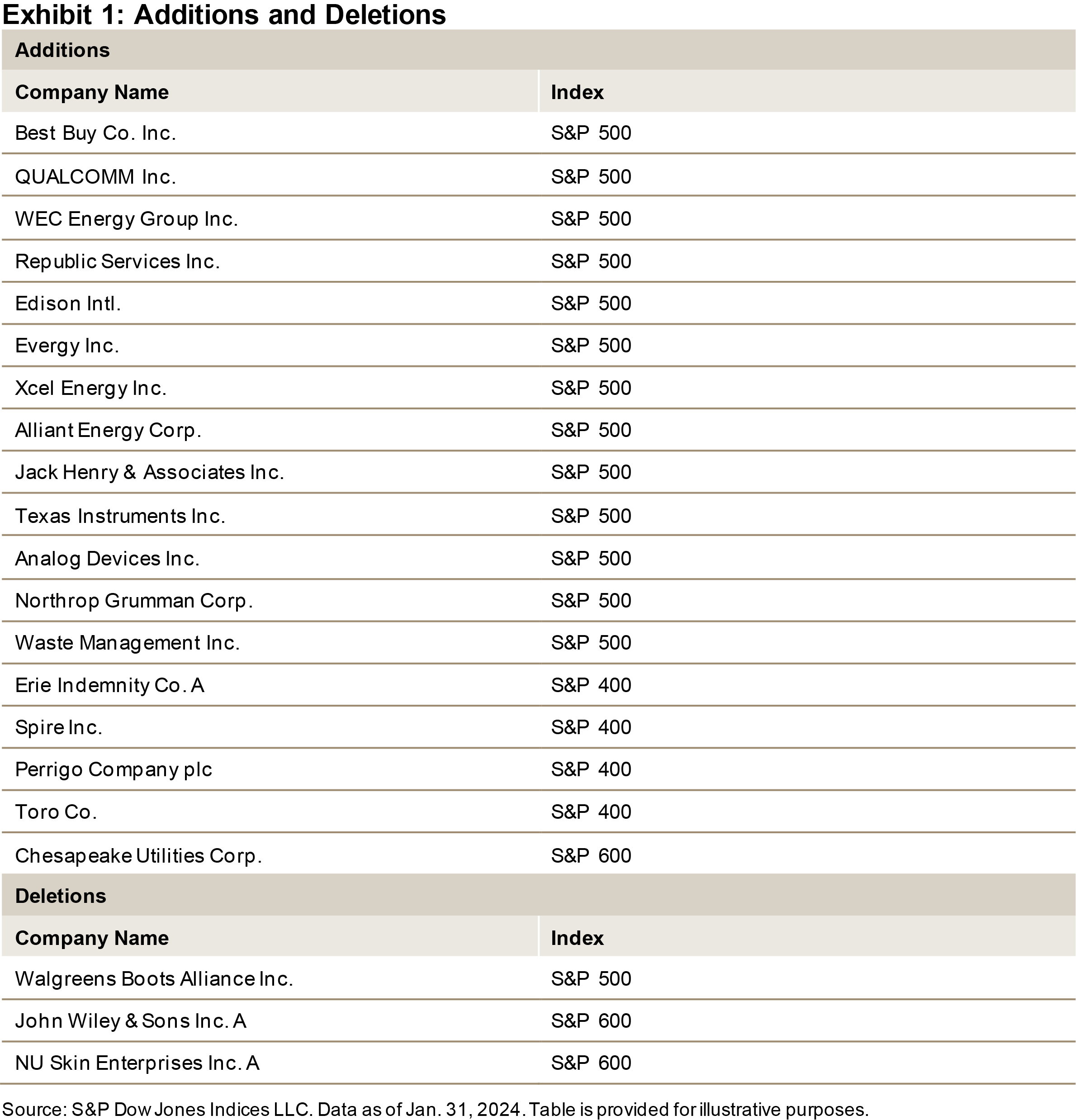
® ,& S&P MidCap 400 ® and S&P SmallCap 600(* )® , respectively. The 15 net additions consisted of 12 net additions from the S&P 500, 4 additions from the S&P MidCap 400, and 1 net reduction from the S&P SmallCap 600. Post-reconstitution, there are 89, 35 and 12 constituents from the S&P 500, S&P MidCap400 and S&P SmallCap 600, respectively. As Exhibition 3 screens, Energies and Industrials were the most significant recipients of the reconstitution, with their net counts increasing by 7 and 4, respectively. Industrials now makes up 30 constituents, 8 more than the next-highest sectors by count: Financials and Utilities, each with 22. After losing 2 constituents, Customer Staples dropped to the third-highest sector by count, with 19. The only constituent in the Interaction Providers sector, John Wiley & & Sons, was gotten rid of from the index, leading to Interaction Providers being the only GICS ®(* )sector without representation in the index. A Long History of Dividend Development
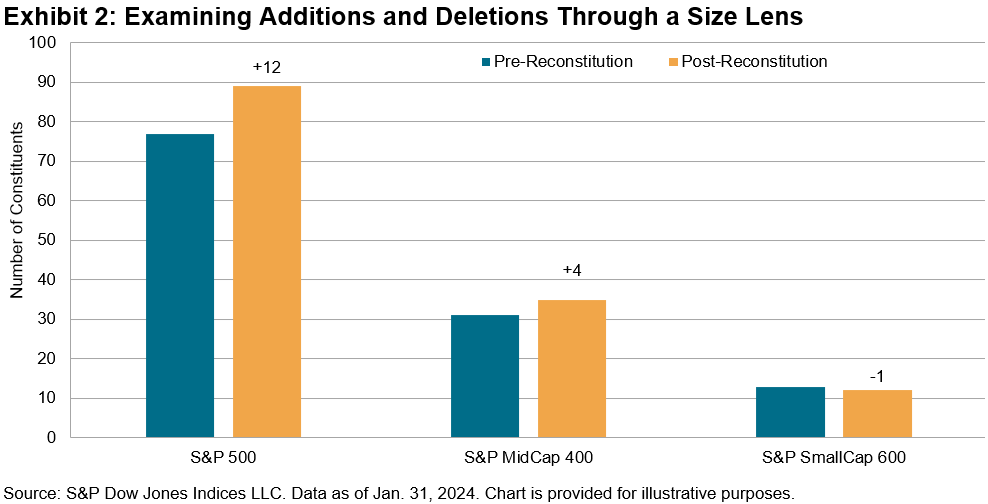
Exhibition 4 sums up the variety of constituents that have actually increased their dividends in five-year increments. Especially, over half of constituents have actually increased their dividends for 35 years or longer, and over 36% have actually attained this accomplishment for 45 years or longer. These performance history are definitely good and show these business’ traditionally constant capability and desire to return increasing quantities of investor capital throughout numerous years. The posts on this blog site are viewpoints, not suggestions. Please read our
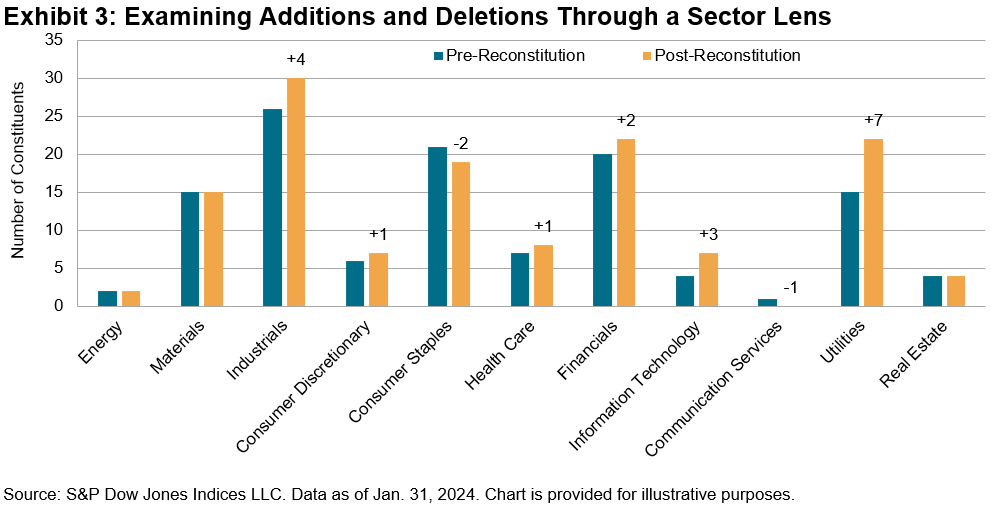
Disclaimers
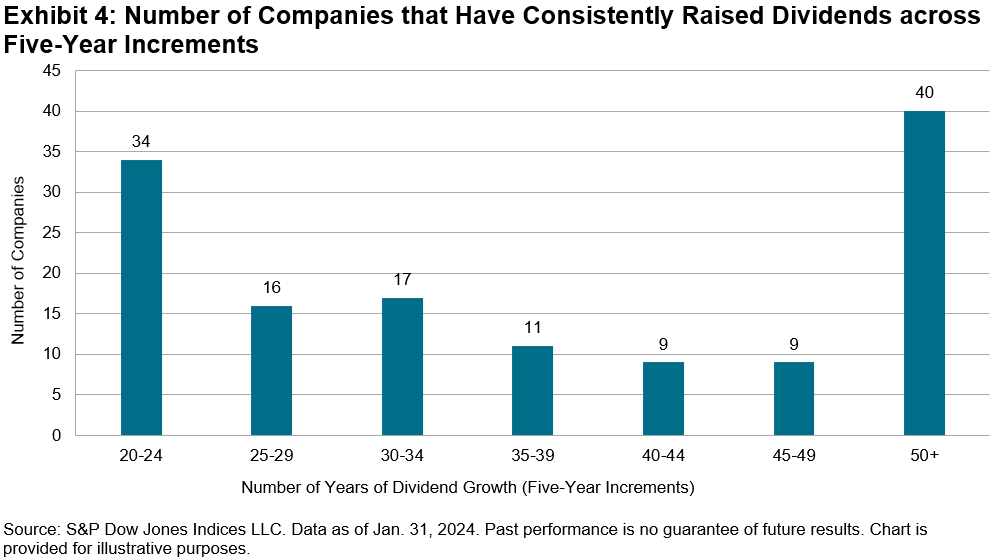
S&P 500 Dividend Aristocrats Rebalance: Fastenal in, Walgreens out
Wenli Expense Hao Director, Elements and Dividends Indices, Item Management and Advancement S&P Dow Jones Indices
The
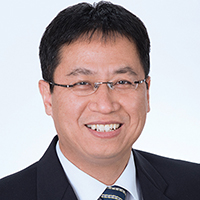
S&P 500
®(* )Dividend Aristocrats
®(* )looks for to track an elite group of business that have actually raised their dividends for a minimum of 25 successive years. This index has actually simply concluded its yearly reconstitution, which worked at the marketplace close on Jan. 31, 2024. Fastenal has actually been included, while Walgreens is out, which keeps the subscription list at 67 stocks.
Presenting the Index’s Newest Member: Fastenal Business Fastenal is the most recent business to be contributed to this distinguished index by raising its dividends for 25 successive years. This brand-new S&P 500 Dividend Aristocrat is a commercial supplier that offers products varying from fasteners to tools and has actually developed into a supply chain service business. Since Dec. 31, 2023, Fastenal has a gross margin of 45.7%, 1 a return-on-equity of 34.5% and a low debt-to-equity ratio of 7.8%. Fastenal has a dividend yield of 2.3%, which remains in line with the 2.4% general yield of the S&P 500 Dividend Aristocrats. A Long-Term Member Is out: Walgreens Boots Alliance, Inc.
Walgreens Boots Alliance was dropped from the index after the drug store chain decreased its quarterly dividends by 48% to 25 cents per share. The relocation comes as the business looks for to
enhance its long-lasting balance sheet and money position
Walgreens had actually been a veteran member of the S&P 500 Dividend Aristocrats, having actually increased its yearly dividends for nearly 50 years. Nevertheless, this index’s strict approach needs the 25 years to be successive, and guidelines are guidelines. The S&P 500 Dividend Aristocrats Sector Breakdown
These modifications did not have a product influence on the general sector weights. As Exhibition 1 reveals, the index keeps its fairly big overweights in constant dividend-paying sectors such as Customer Staples and Industrials, with big underweights in IT, Interaction Providers and Customer Discretionary.
A Long History of Dividend Development While among the longer-standing members of the index was gotten rid of, Exhibition 2 reveals that majority of the present constituents in the S&P 500 Dividend Aristocrats have actually grown their dividends for more than 40 years. 1
Taylor Ranta Oborski,
Fastenal Business Reports 2023 Yearly and 4th Quarter Incomes
, Jan. 18, 2024.
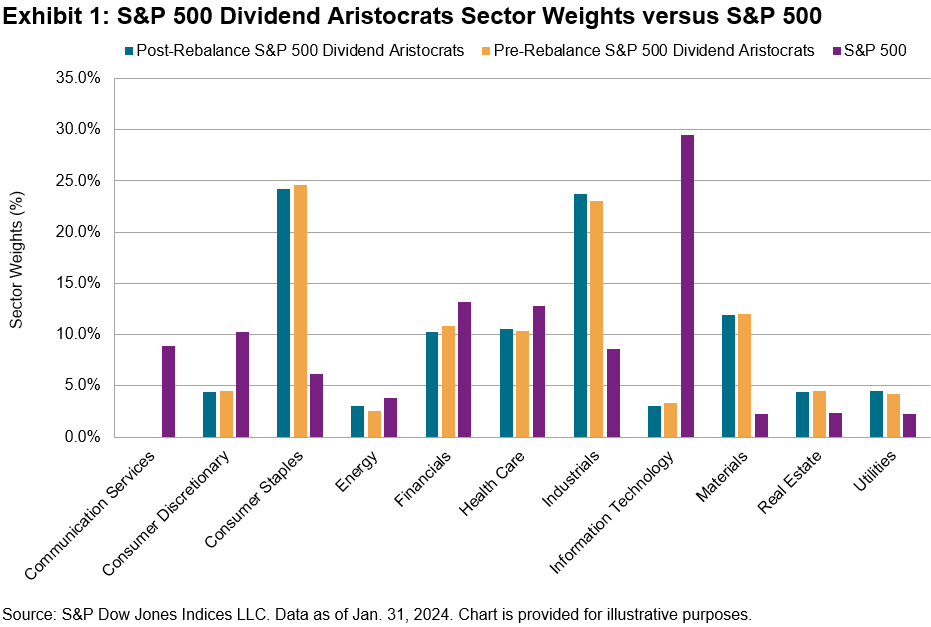
The posts on this blog site are viewpoints, not suggestions. Please read our
Disclaimers
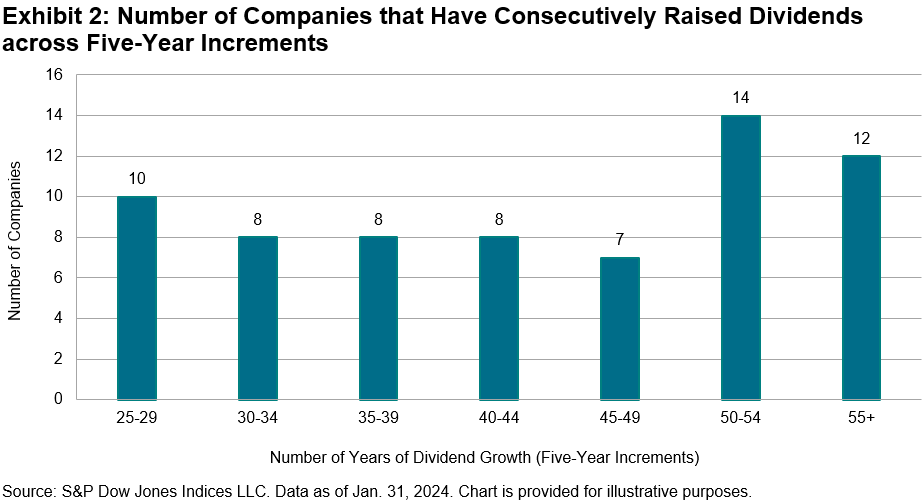
The S&P Dividend Aristocrats Stay Standard Beaters in Pan Asia While a lot of dividend methods underperformed their particular standards in 2023, the S&P Pan Asia Dividend Aristocrats
® remarkably surpassed the S&P Pan Asia BMI
by around 3.50% (see Exhibition 1). In addition, regardless of the outperformance, the S&P Pan Asia Dividend Aristocrats’ evaluations and dividend yield stayed beneficial relative to the criteria (see Displays 3 and 4). This blog site will analyze these metrics in more information, in addition to supplying an in-depth efficiency attribution for 2023.

As Exhibition 1 reveals, the S&P Pan Asia Dividend Aristocrats’ strong 2023 efficiency even more increased its long-lasting outperformance versus the S&P Pan Asia BMI. Returning to Dec. 31, 2001, the S&P Pan Asia Dividend Aristocrats has actually surpassed the S&P Pan Asia BMI typically by 2.35% yearly. Furthermore, this long-lasting outperformance has actually been attained while likewise providing a lower full-period volatility, optimum drawdown and disadvantage capture ratio. Exhibition 2 shows the 2023 efficiency attribution for the S&P Pan Asia Dividend Aristocrats and S&P Pan Asia BMI. As displayed in the attribution analysis columns, the overall outperformance amounted to 3.50%, with 7.15% due to the bottom-up stock choice impact and -3.65% from the allotment or sector impact. Infotech was the biggest positive-contributing sector for the S&P Pan Asia Dividend Aristocrats, at 10.20%, with 10.78% from the choice impact and -0.58% due to the allotment impact. The essential differentiator of the S&P Pan Asia Dividend Aristocrats versus its criteria is the requirement that stocks should increase dividends per share for a minimum of 7 successive years. This filter, in addition to the payment and dividend yield filter, might predisposition the index towards choosing greater quality stocks given that the capability to regularly grow dividends over the long term can be an indicator of monetary strength and discipline. Exhibition 3 shows the evaluation contrast and discount rate of the S&P Pan Asia Dividend Aristocrats versus its criteria. The index is less expensive on all 3 metrics revealed, with a typical discount rate over the 3 metrics at around 34%. Disappointed in the table however crucial nevertheless, is the return-on-equity (ROE) metric, which determines how effectively a business uses investor capital to produce earnings. The S&P Pan Asia Dividend Aristocrats has a 9.9% ROE versus 9.1% for the S&P Pan Asia BMI since Dec. 29, 2023. As Exhibition 4 programs, the index’s dividend yield has actually been greater than the Pan Asia BMI’s dividend yield every year given that 2009. In addition, the typical dividend yield for the S&P Pan Asia Dividend Aristocrats was 3.42% versus 2.47% for the S&P Pan Asia BMI over this duration. Surprisingly, the year-end 2023 dividend yield for the S&P Pan Asia Dividend Aristocrats was 3.71%, 8.40% greater than its historic typical versus the S&P Pan Asia BMI’s year-end 2023 dividend yield of 2.57%, just 4% greater than its historic average. Conclusion
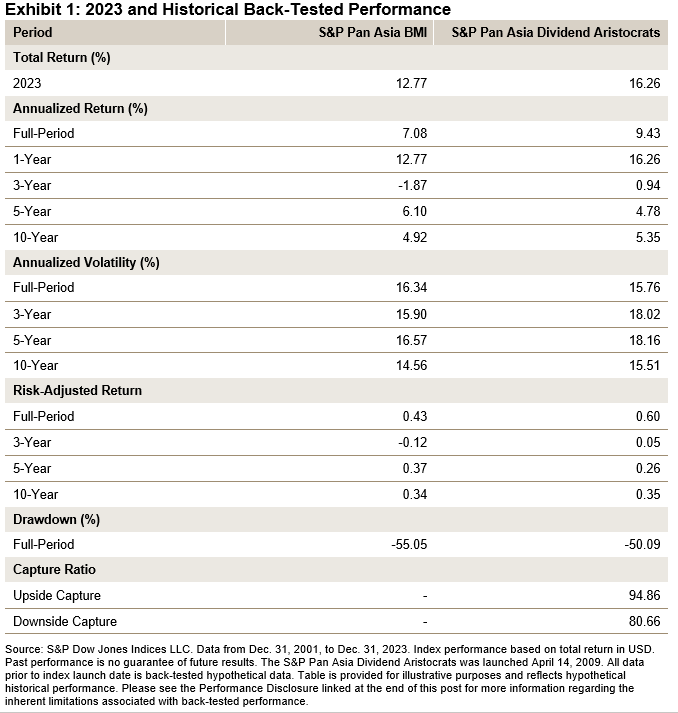
Following a strong year of efficiency in 2023 thanks to its reliable bottom-up stock choice, the S&P Pan Asia Dividend Aristocrats heads into 2024 holding a dividend yield and evaluation benefit over its criteria. For financiers looking for an index with these worth and dividend yield direct exposures, in addition to different quality and dividend filters, the S&P Pan Asia Dividend Aristocrats Index is a choice to think about.
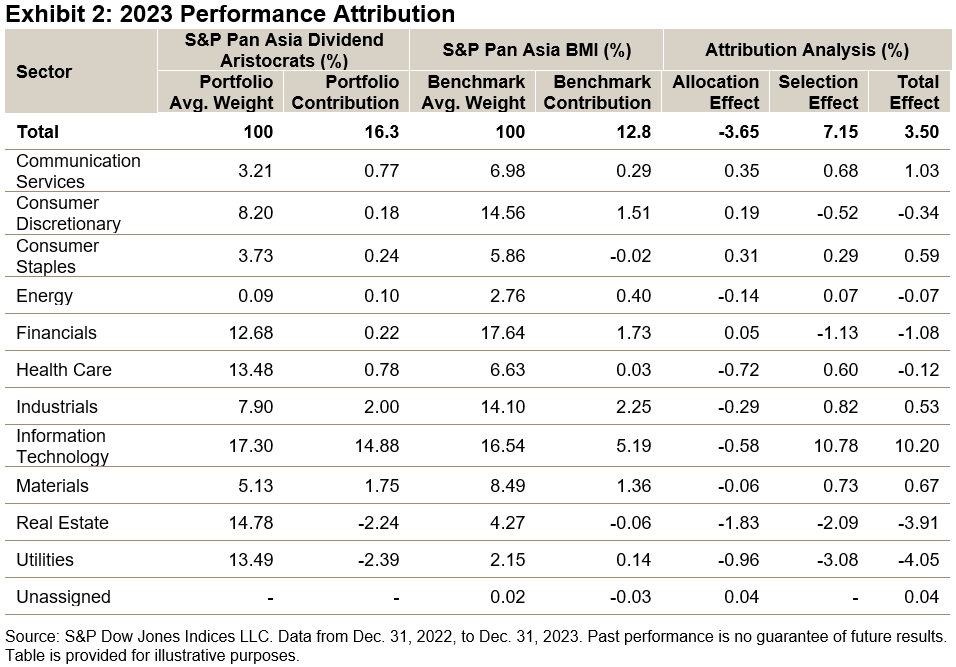
The posts on this blog site are viewpoints, not suggestions. Please read our
Disclaimers

